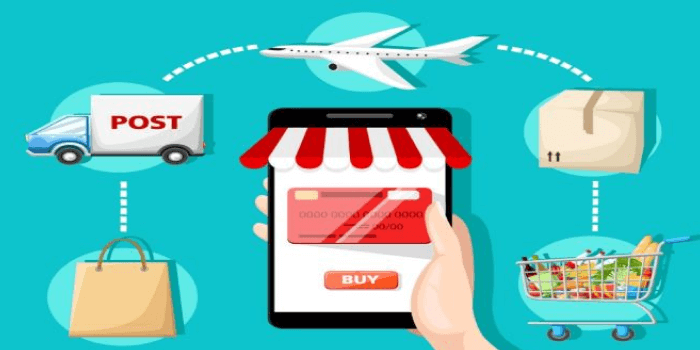Imagine being able to run your own e-commerce site without having to worry about stocking and shipping inventory. This is precisely what dropshipping facilitates.
Dropshipping is an order fulfillment method where the website owner works with a reputed dropshipping company to deliver products directly to customers. The best thing about drop shipping is that the site owners only have to connect the suppliers with the buyers. It is up to the dropshipping company to get the products to the customers.
How can Small Businesses benefit from dropshipping?
The following are some of the benefits a small business can enjoy by expanding to dropshipping.
- Better cash flow because payments are only due to the supplier once the customer makes the payment.
- Customer lifetime value can be improved since new products can be quickly launched to keep existing customers engaged and have them returning to the store.
- Expand reach into new markets by partnering with strategically located suppliers.
- Products that are hard to keep (because they’re large or perishable) are easier to sell.

Steps for Small Businesses to Start Dropshipping
Step 1: Develop the Store’s Theme
Businesses that succeed are based on a theme around which the brand, content, and products are centered. For many sellers, the theme is something that they are passionate about. Already established small businesses can develop a theme based on sales trends uncovered through product research and sales data. Some points are to be kept in mind while developing the theme of your dropshipping business.
- Niche marketing works, but not always: Targeting a niche can be a great strategy, but it is advised to start with a general store. This is done to test the various drop ship products to see what’s doing well. If you start with a niche strategy, and it doesn’t work out the way you thought it would, it is easy to get discouraged.
- Research to identify opportunities: Whether the site is niche-focused or a general store, you have to research to find out what’s popular and if there are any niche needs that are not being met yet. Use Amazon’s “Best Sellers by Category” list to see what products people are searching for and purchasing within categories.
Find Suppliers
Once you have the theme ready, the next step is to find suppliers and products. Small businesses can investigate to find out from where their suppliers source products from and see if you can do business with them. For example, if your business sells toys, find out where the inventory comes from and find out if they do dropshipping.
There are two types of dropshipping suppliers, and each caters to different types of sellers.
- The easiest option is to work with a drop-ship marketplace. The entire dropshipping process is automated by integrating with e-commerce platforms, making it easier to launch the business. Since there are millions of products available on these marketplaces, sellers can quickly build a unique collection as per the store theme and your brand.
- The second option is to source products directly from the suppliers. This is ideal for sellers who want to make better margins as it is more profitable to source the products themselves and white-label them. ThomasNet and Import Genius are two of the best places to find dropshipping suppliers. Small businesses can use Hubba as it is a small business focused directory that gives direct access to close to 100,000 brands.
Build the Website and Add Products
Once you have found your suppliers, the next step is to build the website, for which you’ll need an e-commerce platform. The right choice will depend on two factors – the overall business concept, and the dropship supplier plan.
Some platforms are better for content-rich sites, while others are better for product-focused businesses. So, choose one that aligns with your business concept. For example, Shopify is better for product-focused websites while a WordPress website is better if you want to build a content-rich website. If you have chosen plug-and-play dropshipping marketplace like Oberlo or Doba, then Shopify is a better option. A majority of business owners choose Shopify for the convenience it offers like testing any number of dropshipping marketplaces, suppliers or products and also experiment with new players.
Once the website is set up, the next task is to select and add products. How you should do this depends on whether you’re using a dropship marketplace or sourcing products yourself and adding them manually.
Market and Manage the Store
Once the site is up, the next step is to attract shoppers by marketing the store and its products. The following are the best options to market your dropshipping business.
- Email Marketing
- Setting up a Facebook page and shop
- Setting up shoppable posts on Instagram and Pinterest
- Search Engine Optimization
With all of these channels, always keep in mind the concept and brand to speak the language the target audience can resonate with. It might be better to outsource marketing to a digital marketing agency or a freelancer. But, they don’t come cheap. The good news is that they always give a good ROI if marketing is done right. If time is a restraint, marketing is one function that can be outsourced to an agency.
Once your marketing starts doing its trick, you will see orders coming in. Even if you’re using dropship marketplace suppliers, it is suggested to keep an eye on order management and fulfillment. If you notice from the e-commerce platform dashboard that an order hasn’t been delivered yet, follow up the supplier and sort it out. Customer service needs will increase with the increase in order quantity. So be prepared with a process to respond to customer queries, complaints, and requests. Other than customer services, you’ll also have to track the money that comes in and goes out of the business.
Conclusion
Dropshipping can be the perfect option for small businesses looking to enter e-commerce. For one, it requires lesser financial investment and secondly, the risk is relatively low. Though on a smaller scale, it includes all the main functions of running a large scale e-commerce site. Obtaining a tax ID and local business licenses are some other costs that businesses will have to incur. If you are considering taking your small business online through dropshipping and require financial assistance, Reliant Funding can help you out.






